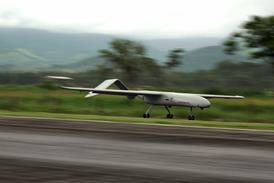Firm to support Raytheon demonstration of hyperspectral reconnaissance payload
BAE Systems has been chosen to integrate a pre-production hyperspectral sensor on a US Navy Boeing F/A-18E/F Super Hornet and US Air Force Lockheed Martin C-130 for demonstration flights later this year.
The company has received a $2.3 million contract from Raytheon to integrate the 270kg (600lb) system into the Shared Reconnaissance Pod for F/A-18 flights in August and C-130 flights by year-end, says Howard Weinstein, director of intelligence systems for BAE Systems North America.
The pending evaluations mean the Spectral Infrared Remote Imaging Transit Testbed (SPIRITT) will allow tactical aircraft crews to for the first time visually track targets using bands of the spectrum beyond visual light and infrared. An upgrade is also being developed to add the ability to detect gaseous emissions.
The SPIRITT payload, which has returned from an "in-theatre" deployment on an undisclosed aircraft, now contains a four-channel sensor, with a fifth channel now in development to add a long-wave infrared aperture to allow pilots to visually confirm targets at stand-off range. A previous version of the payload has been in flight test since August 2005 aboard Scaled Composites' Proteus aircraft and a NASA-owned WB-57 testbed.
SPIRITT was originally developed for integration with the Northrop Grumman RQ-4 Global Hawk unmanned air vehicle and Lockheed U-2 reconnaissance aircraft, and while those plans remain on hold, the payload is being rapidly adapted for use with non-traditional intelligence, surveillance and reconnaissance aircraft, including fighters and transports.
US Air Force and Navy officials plan to transition production versions of the payload to several types in the future, including Boeing F-15 and Lockheed F-16 fighters, Boeing P-8A Poseidon multi-mission maritime aircraft and the General Atomics MQ-9B Reaper UAV, Weinstein says.
Source: Flight International























